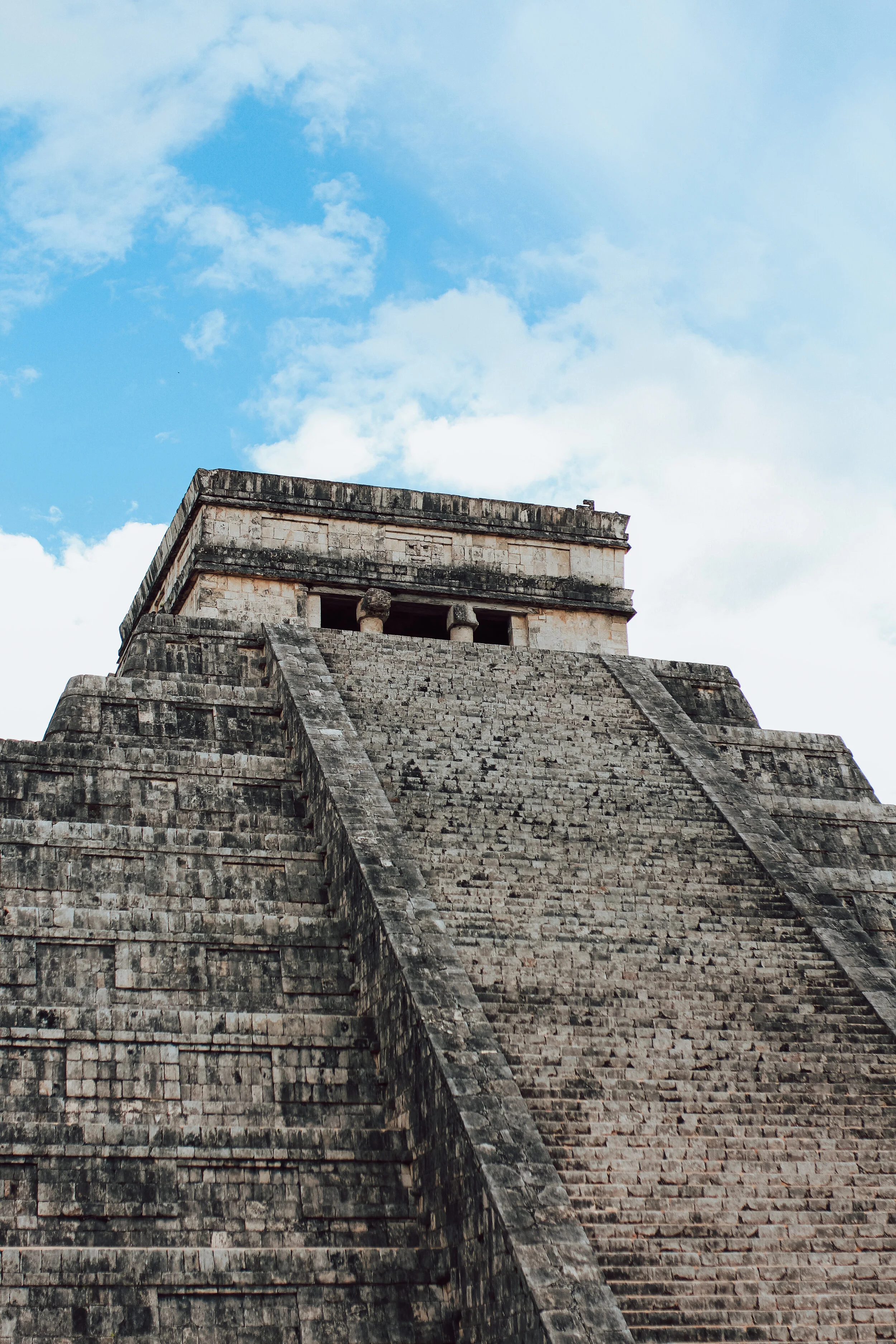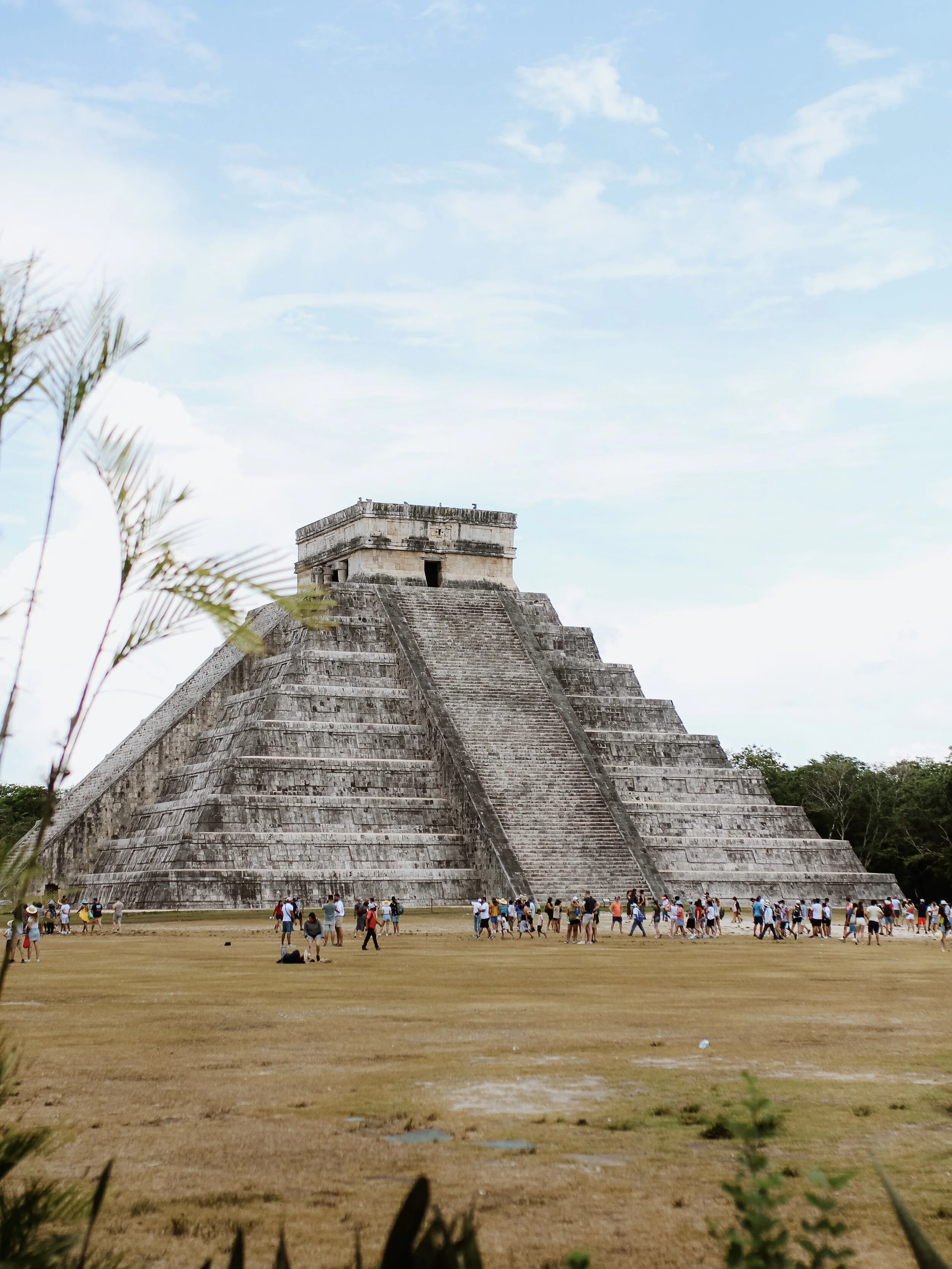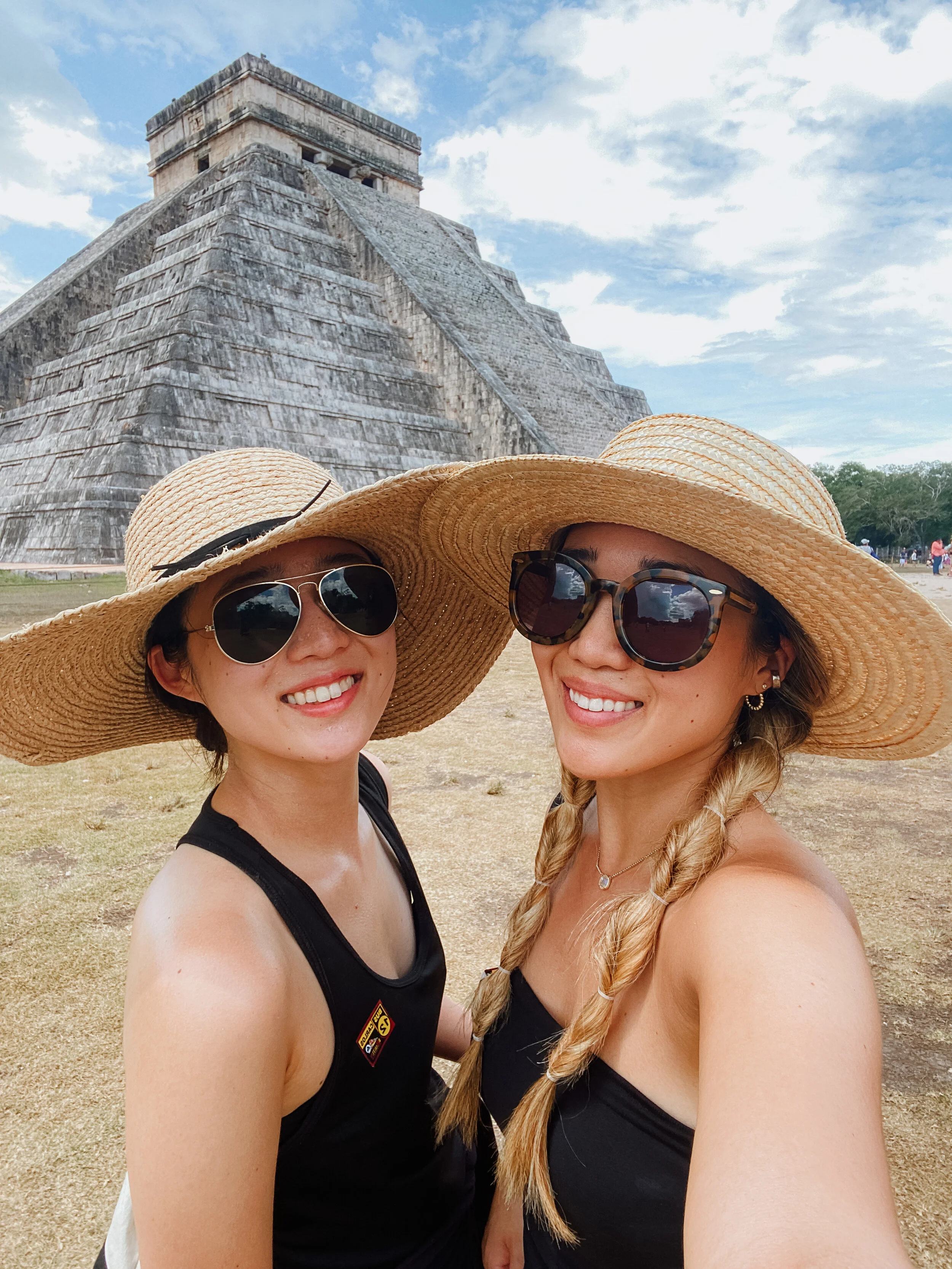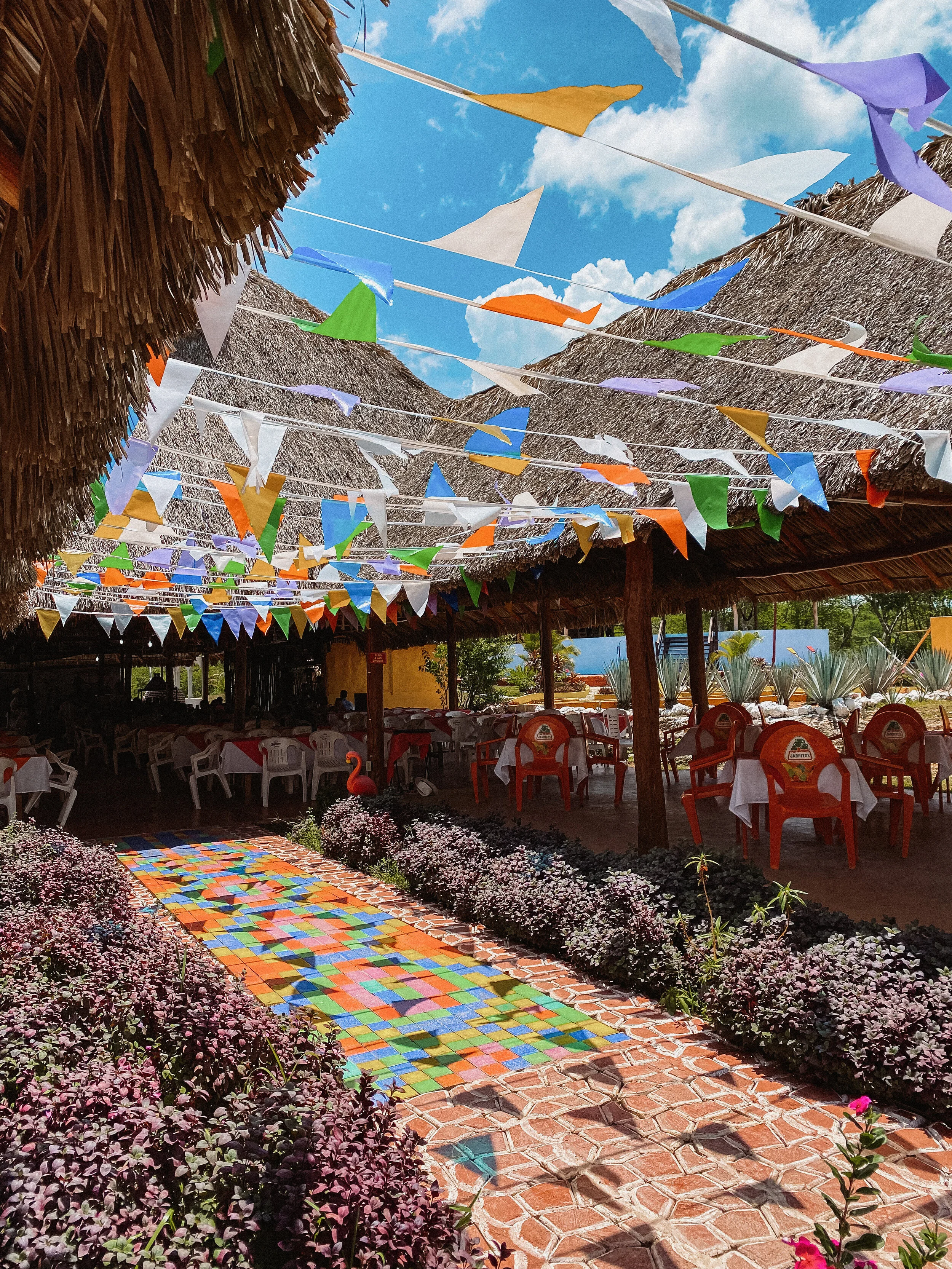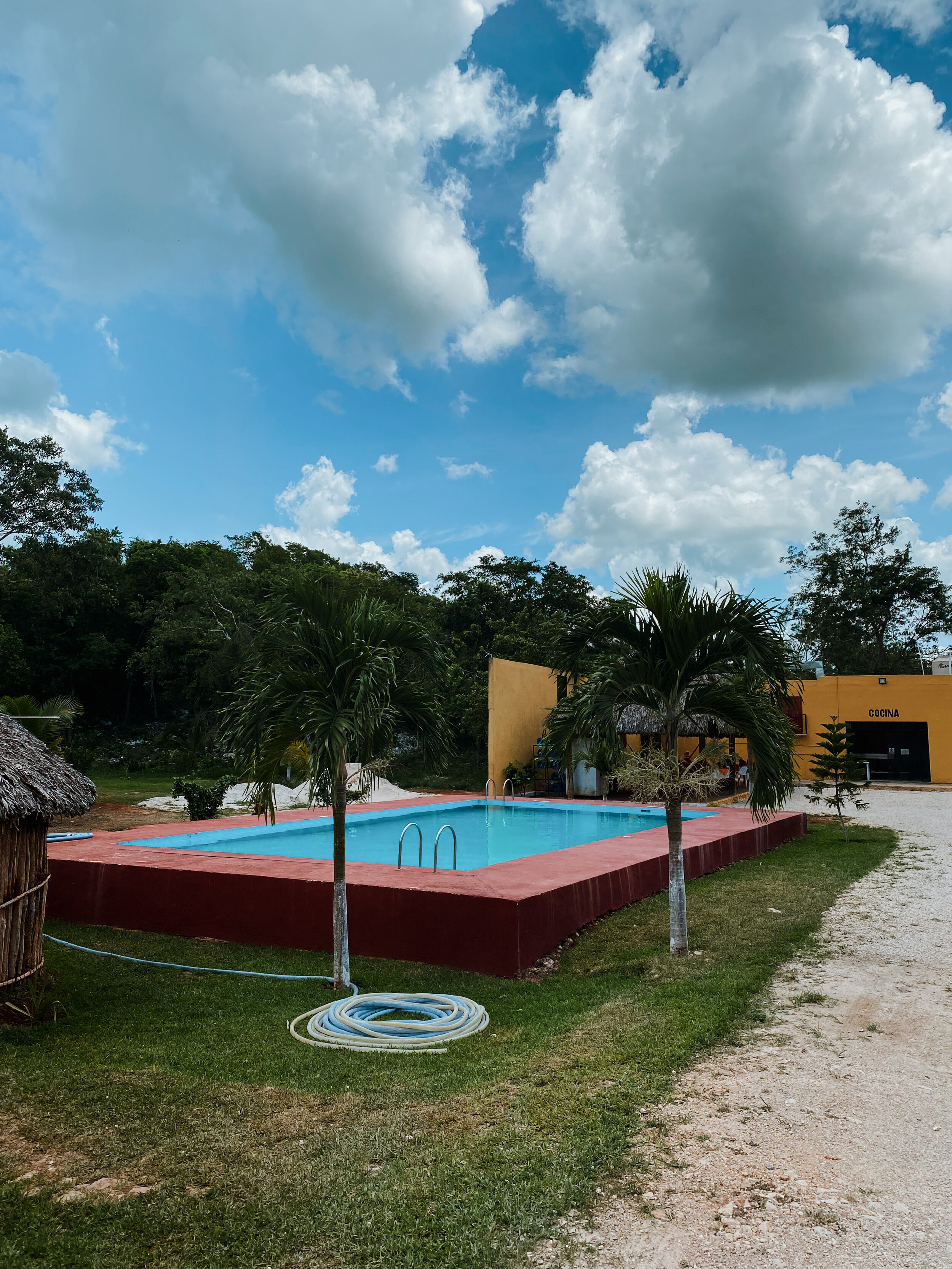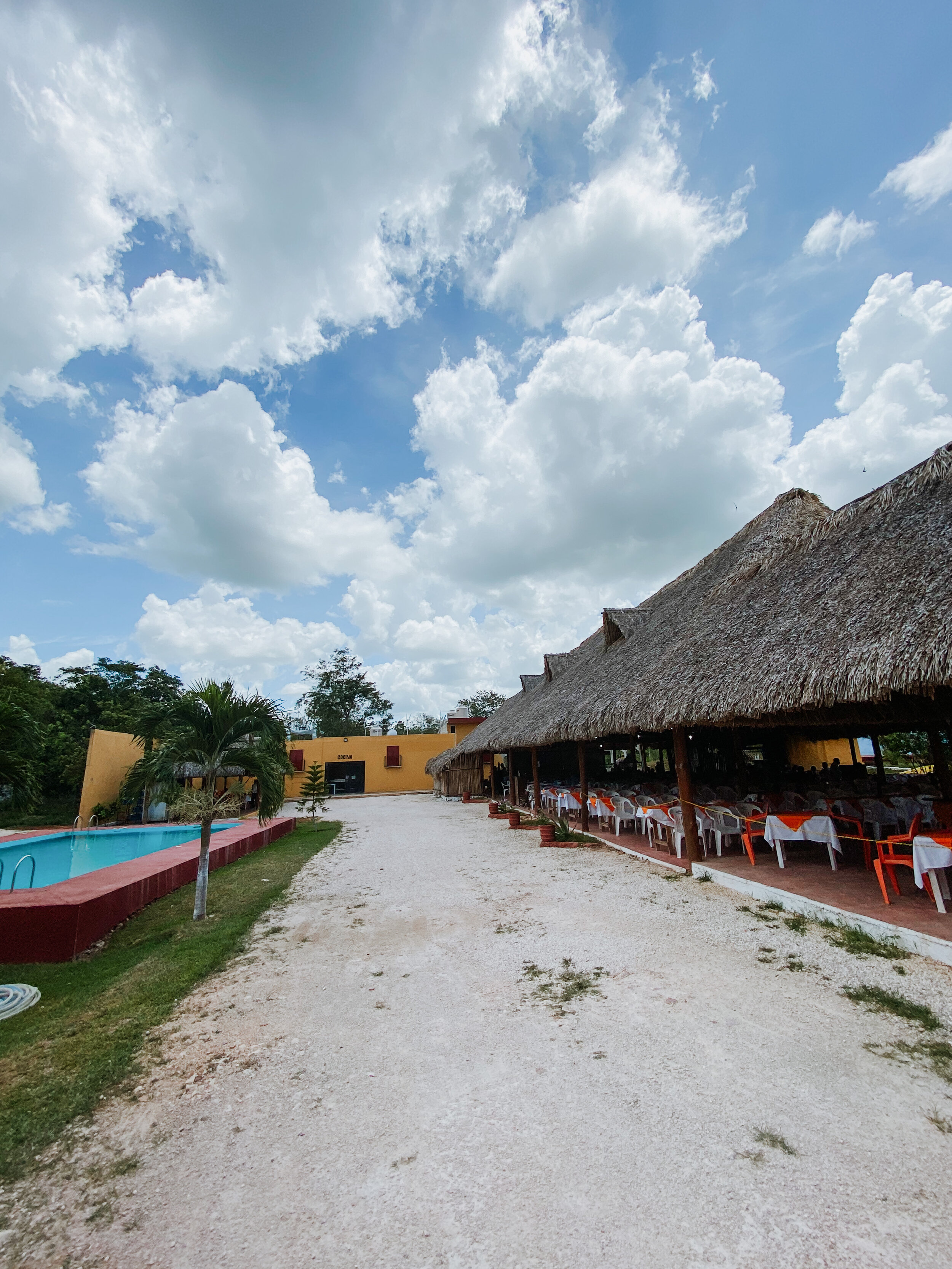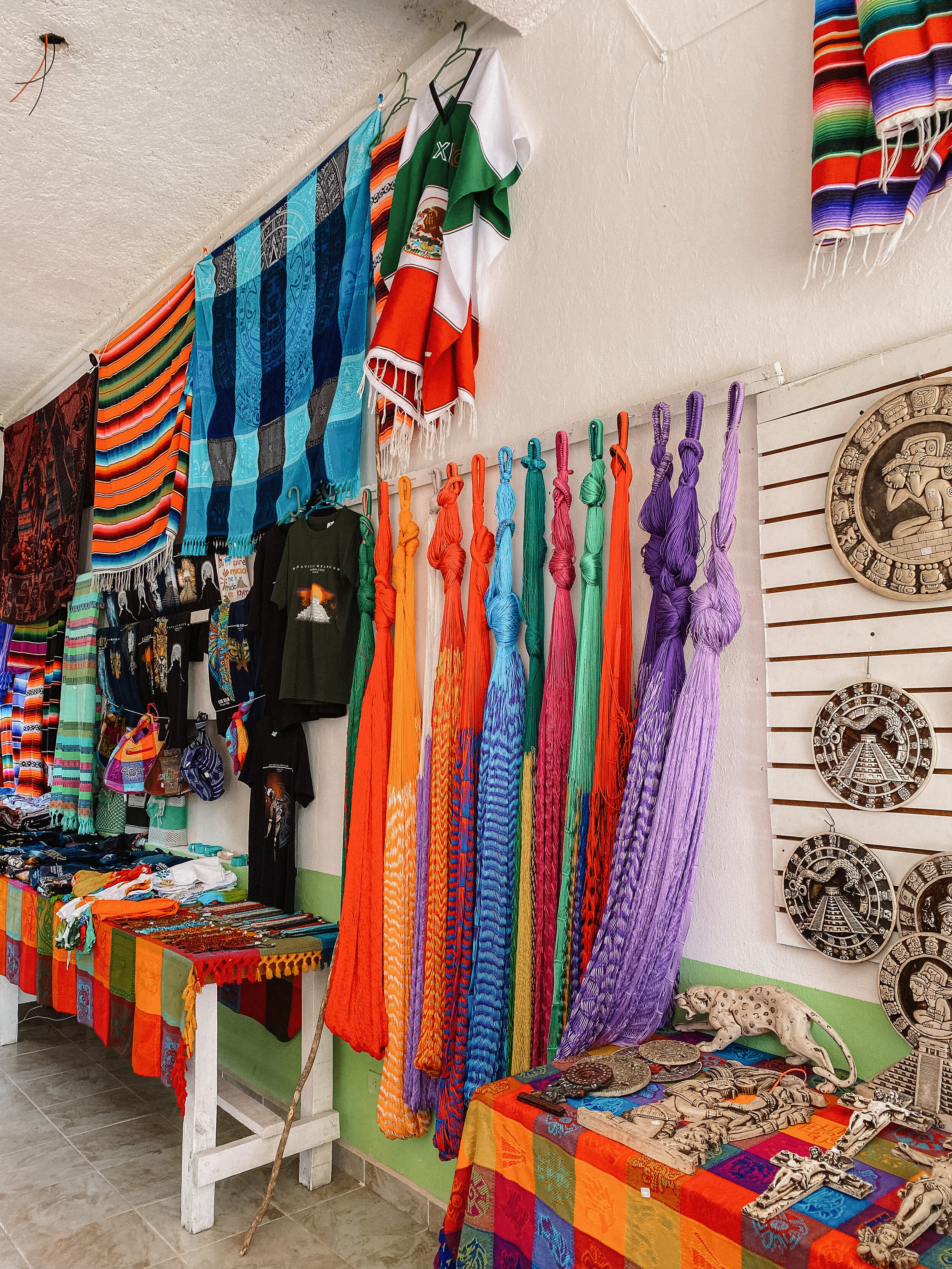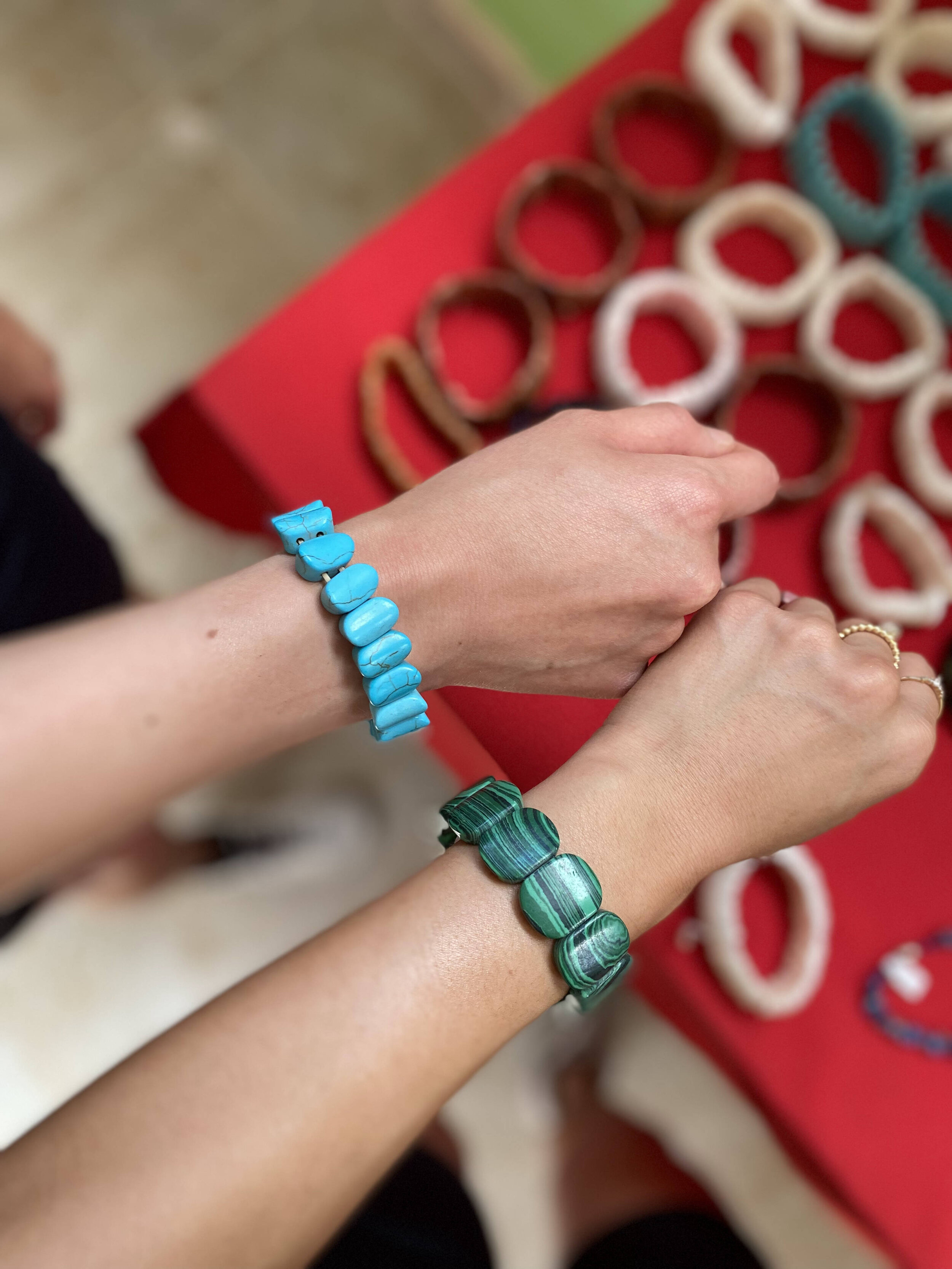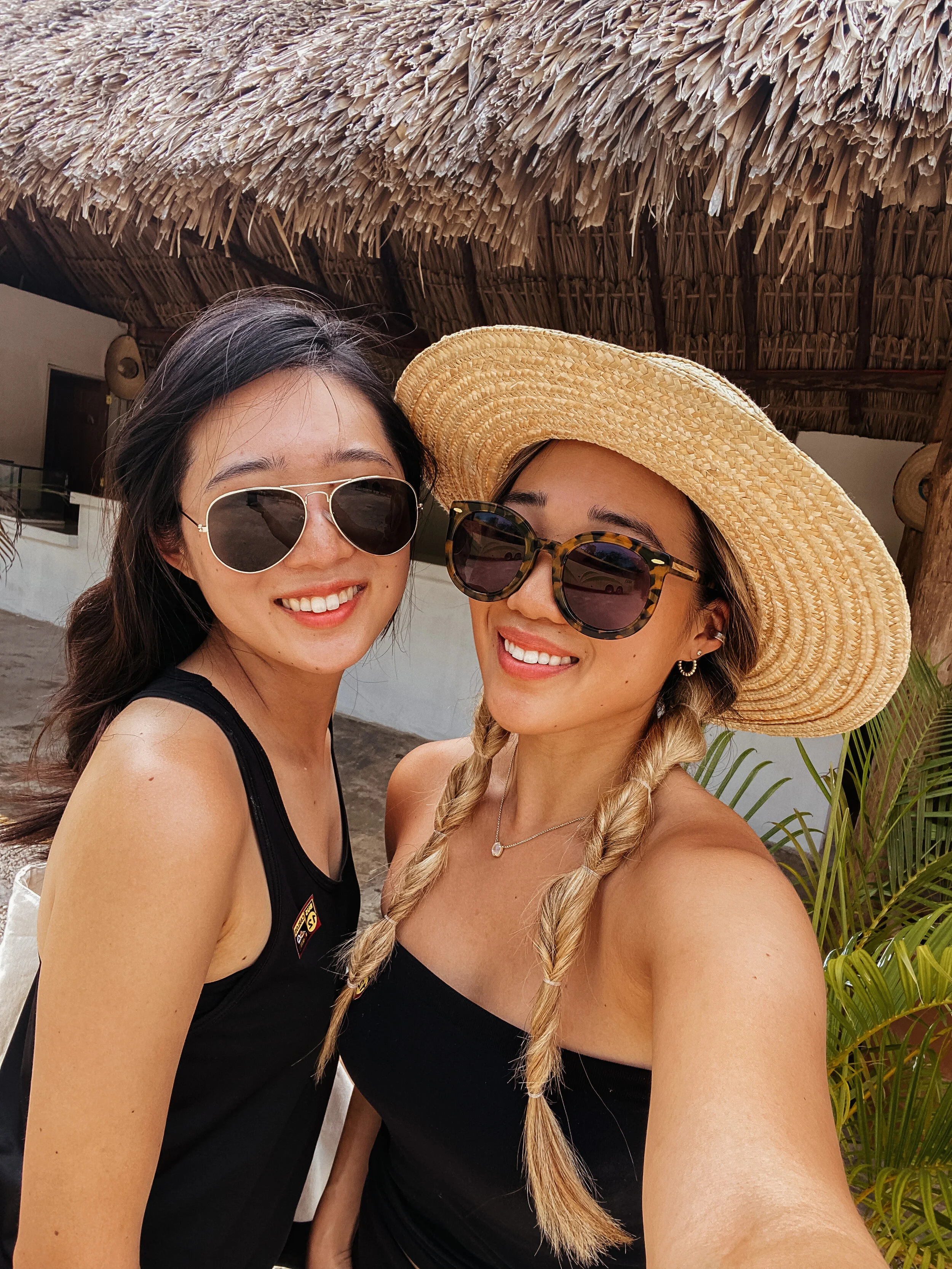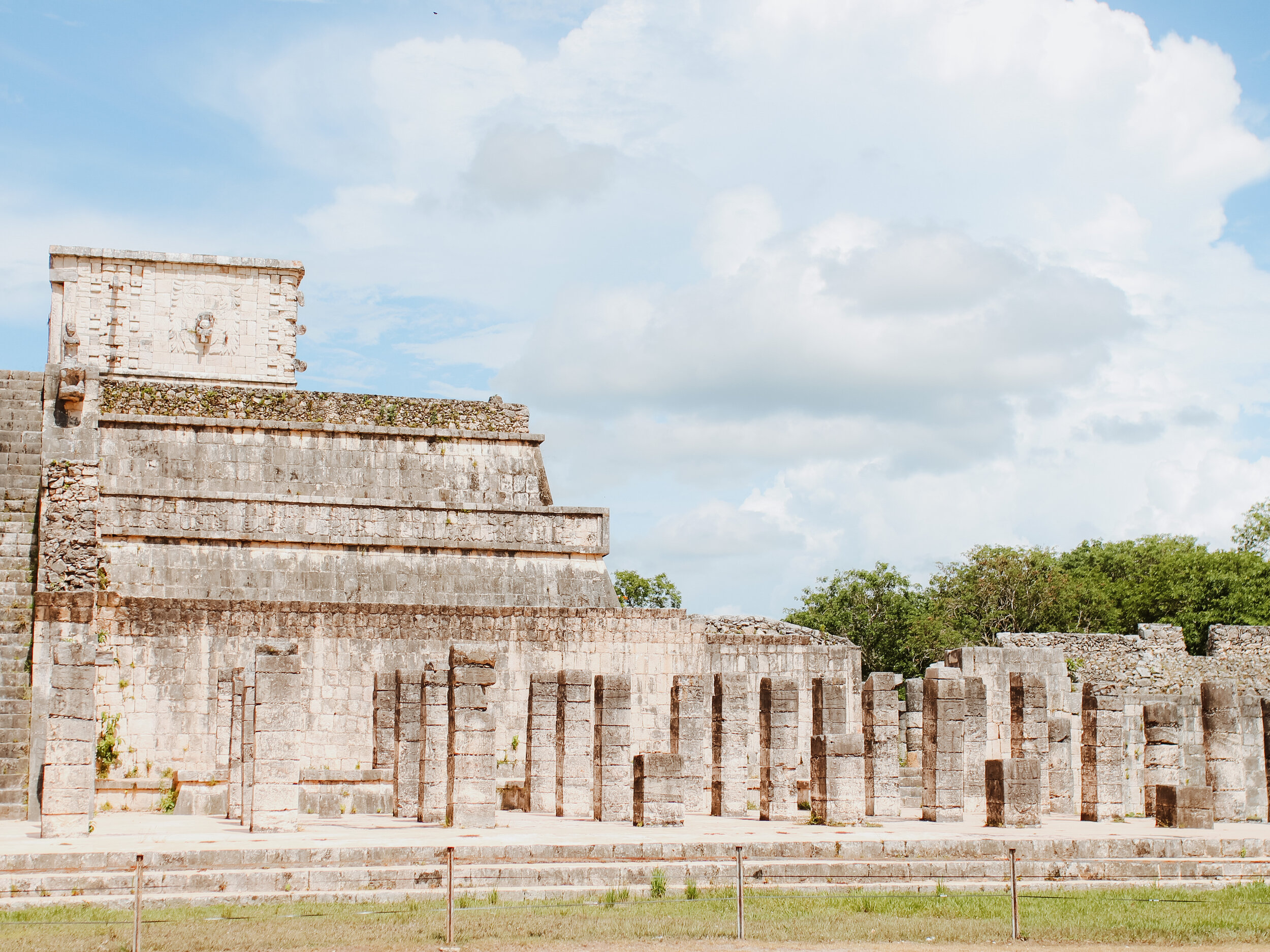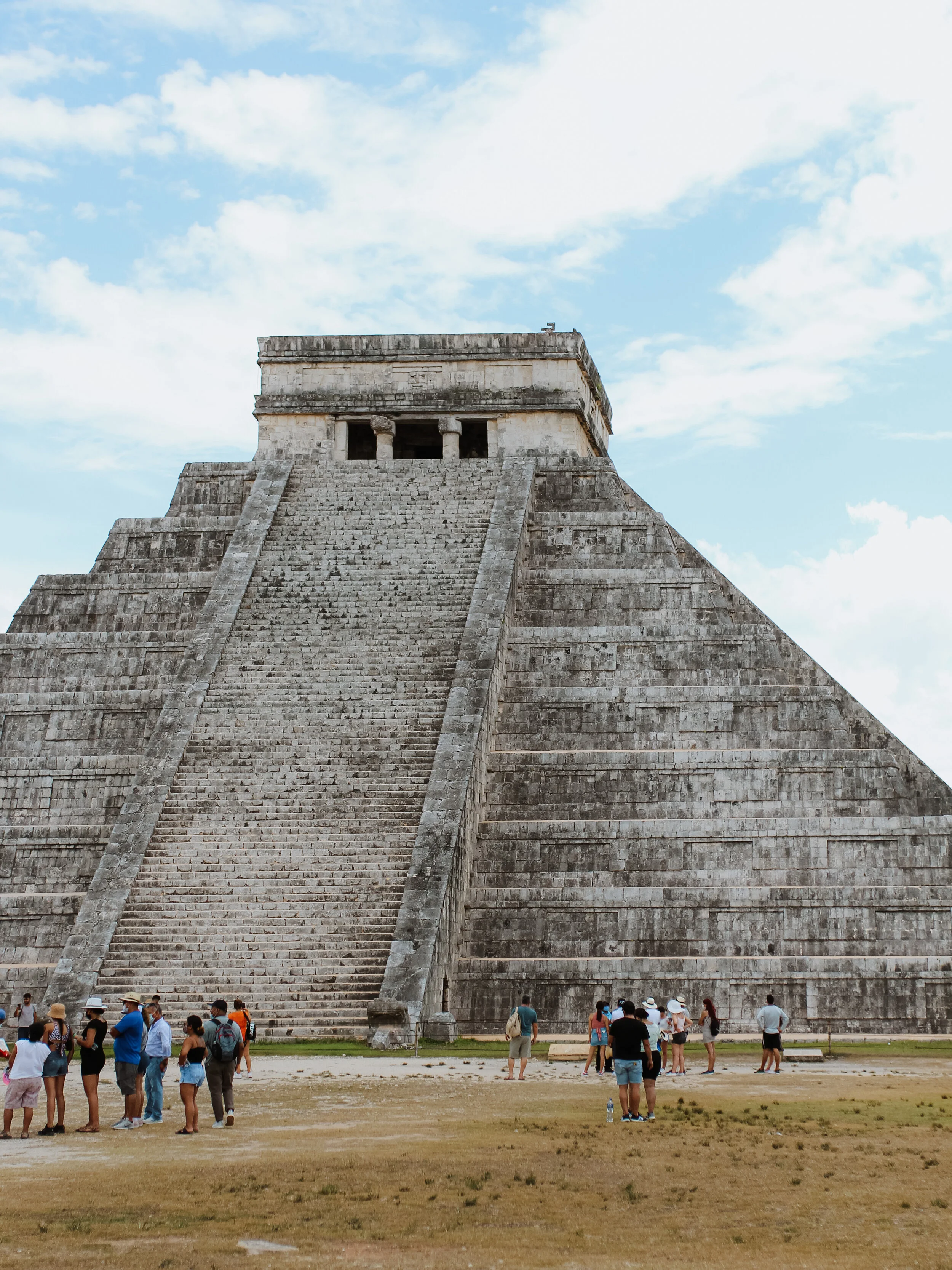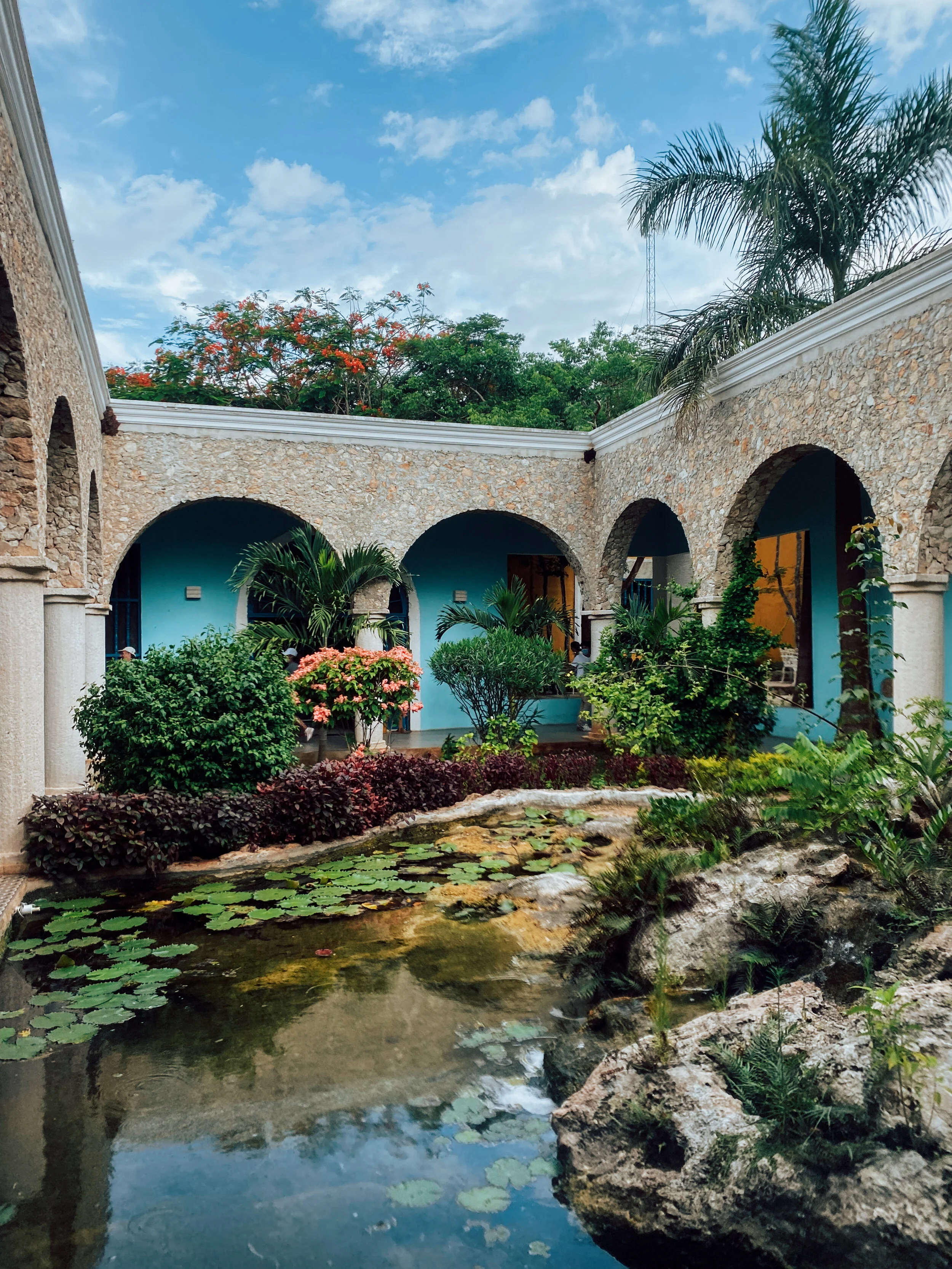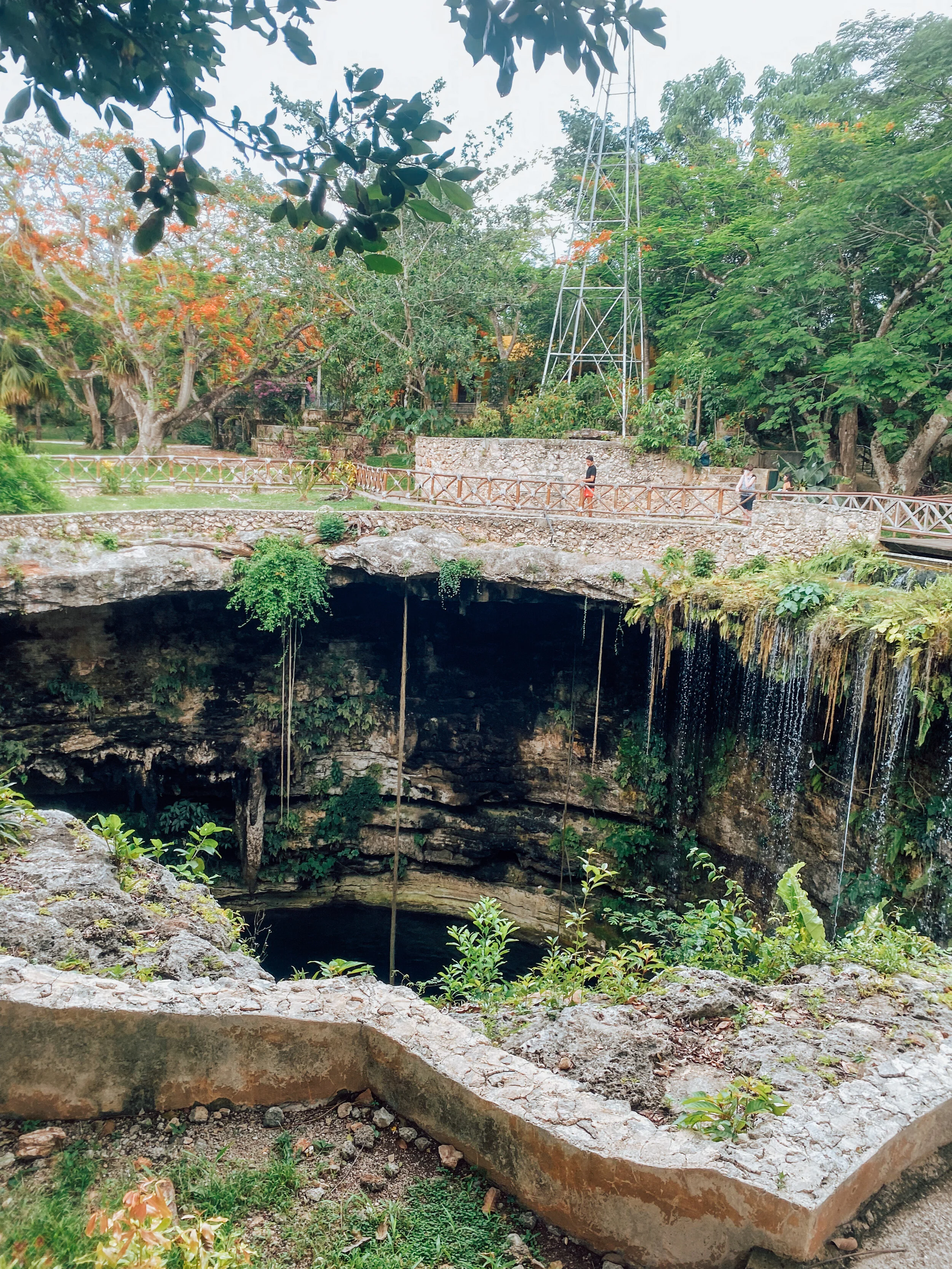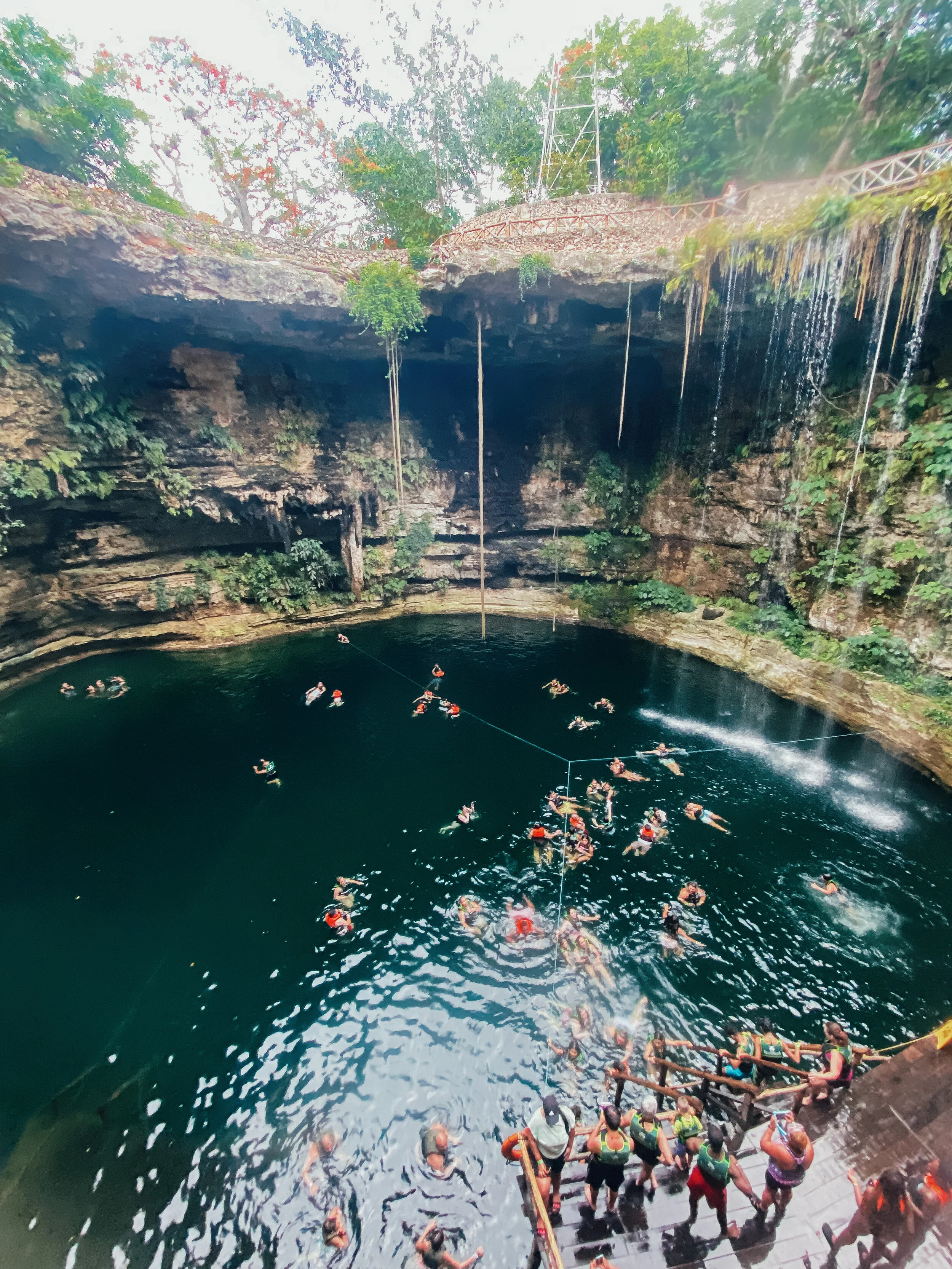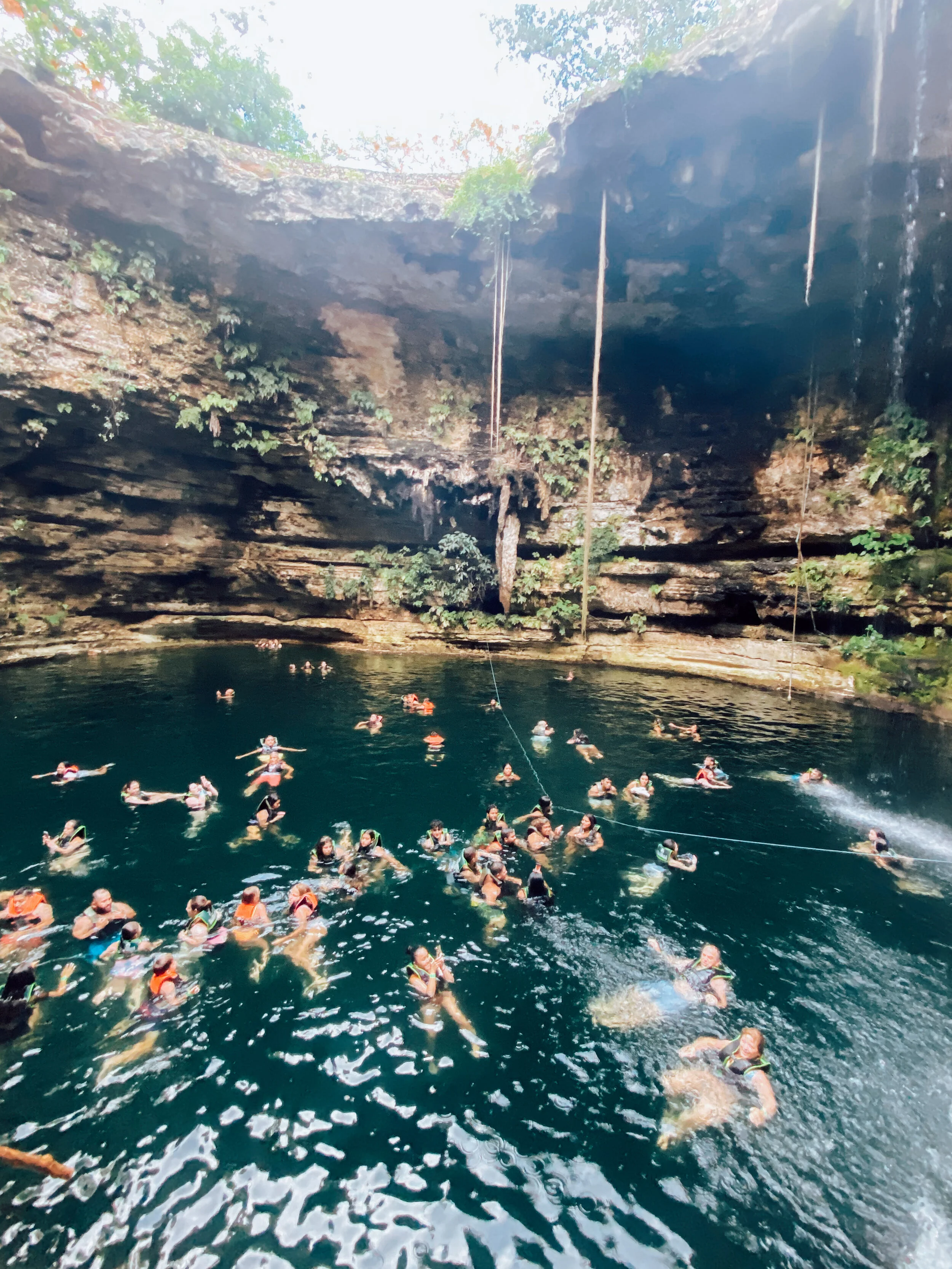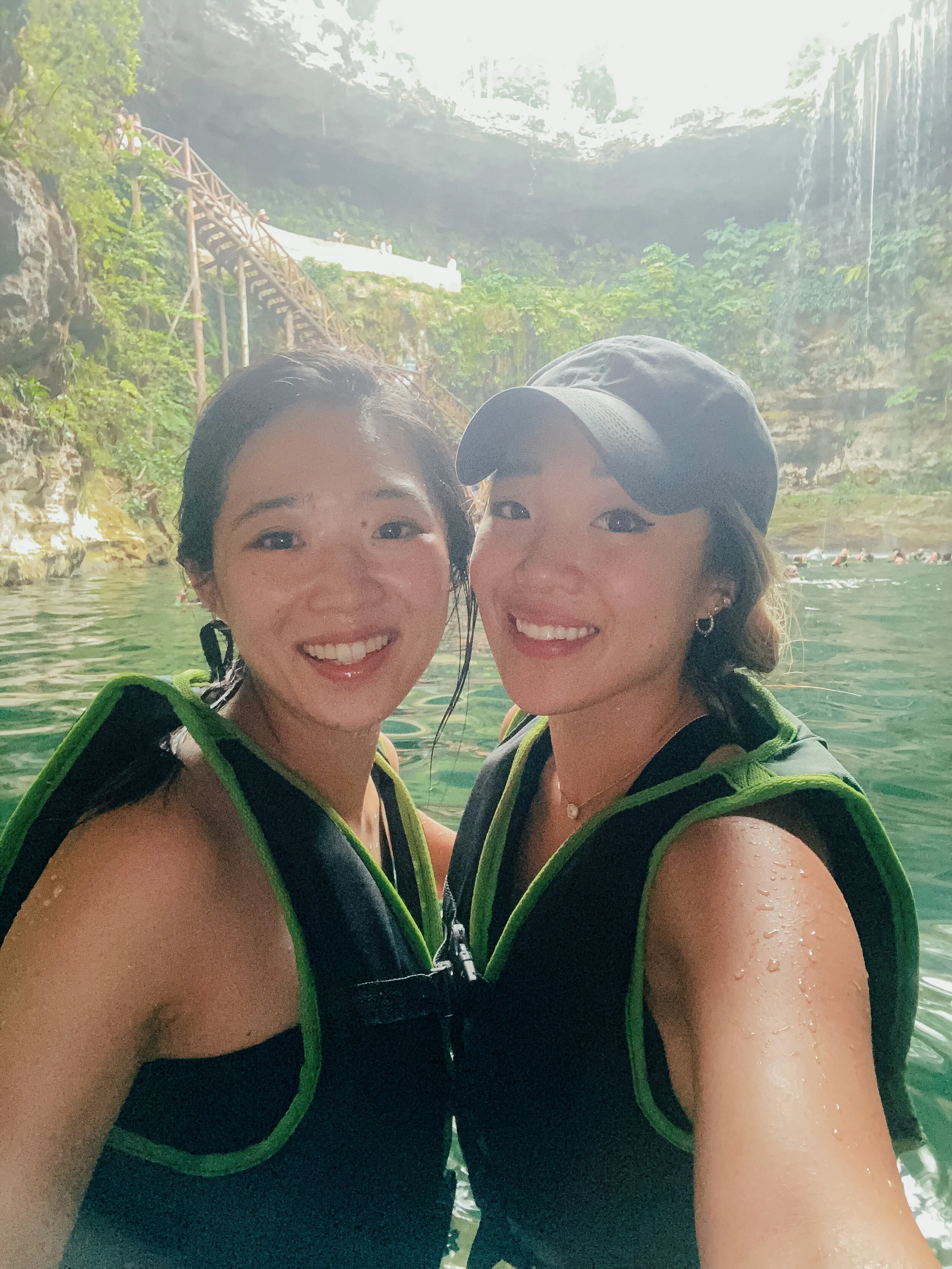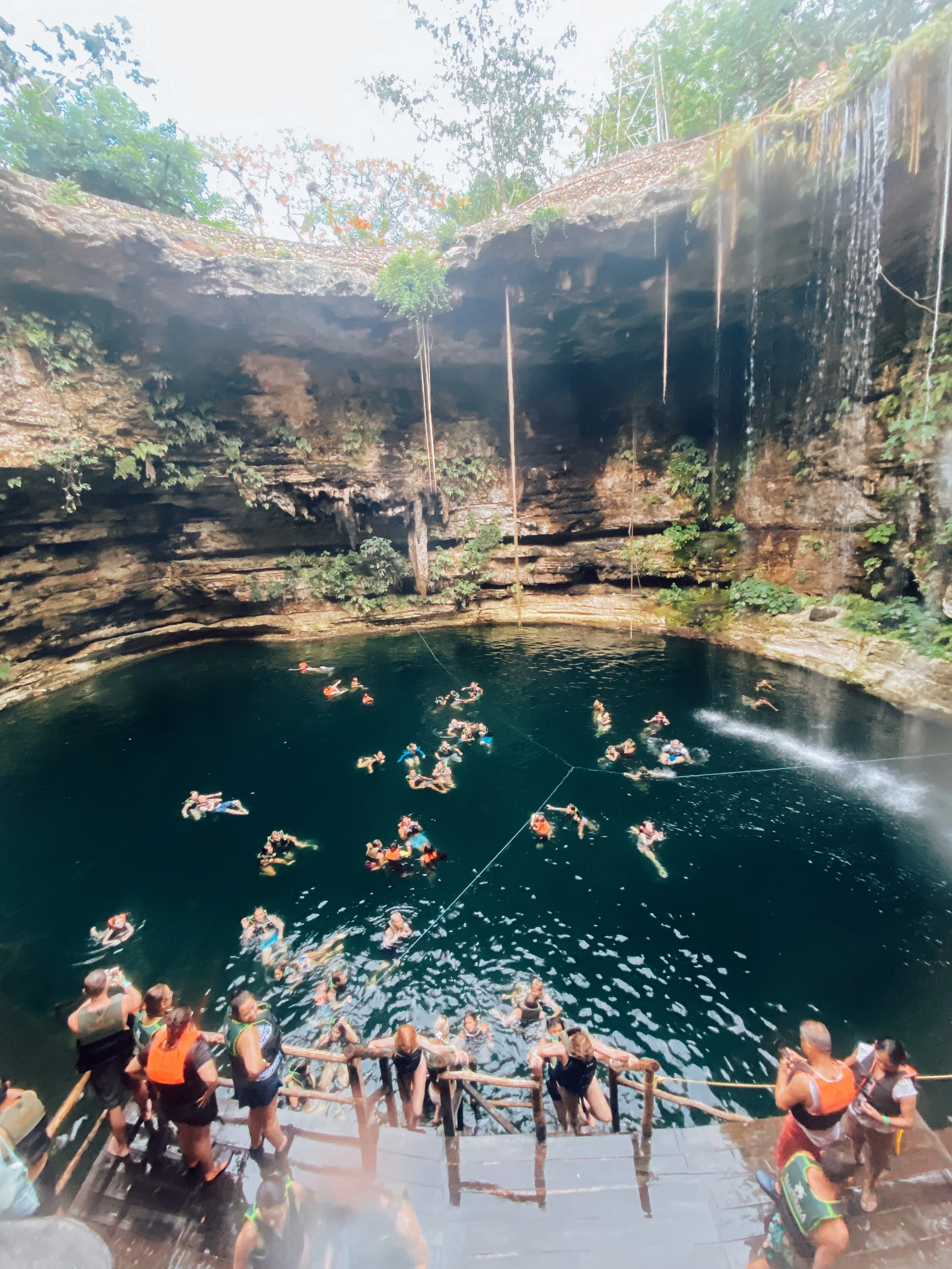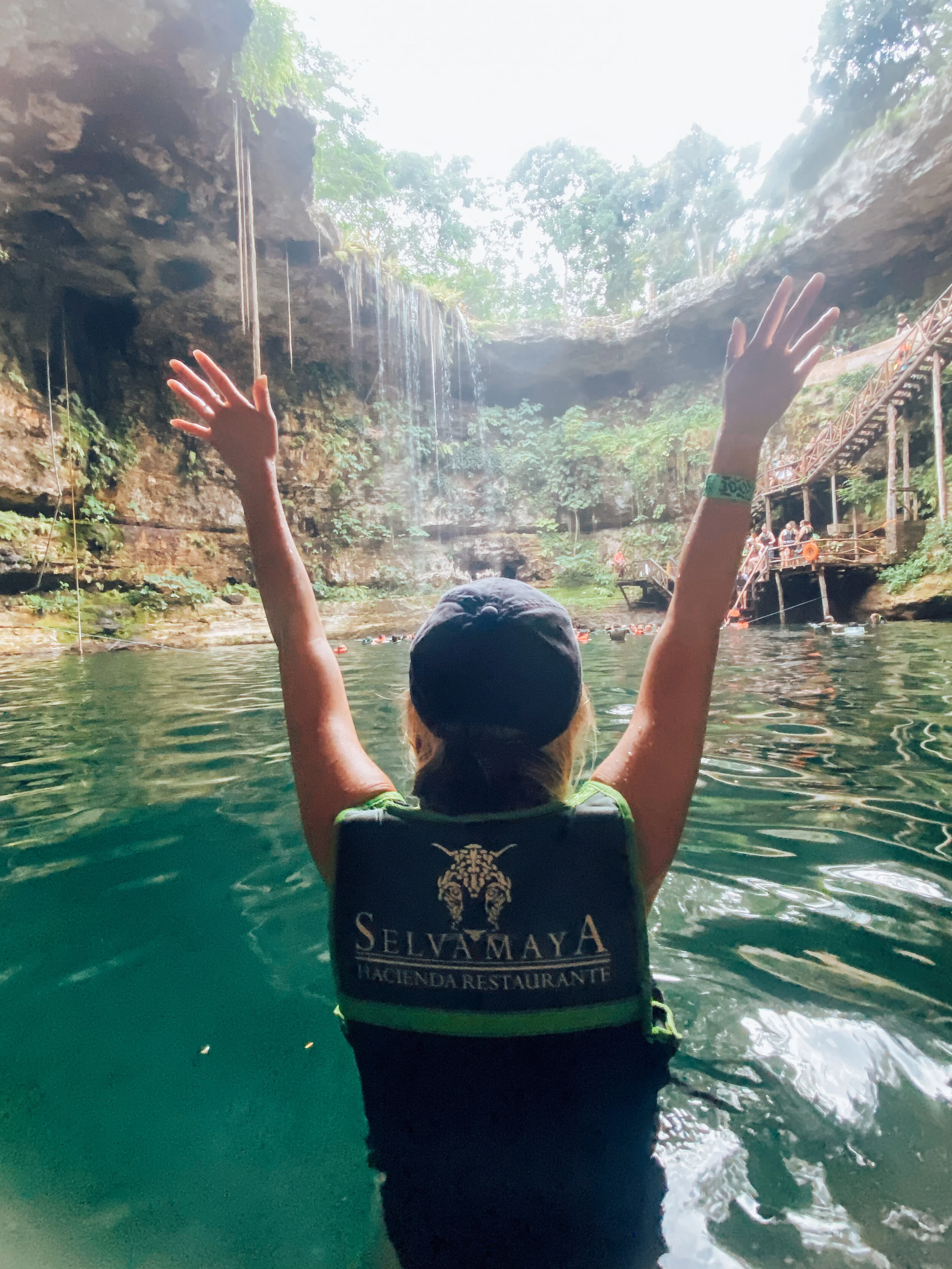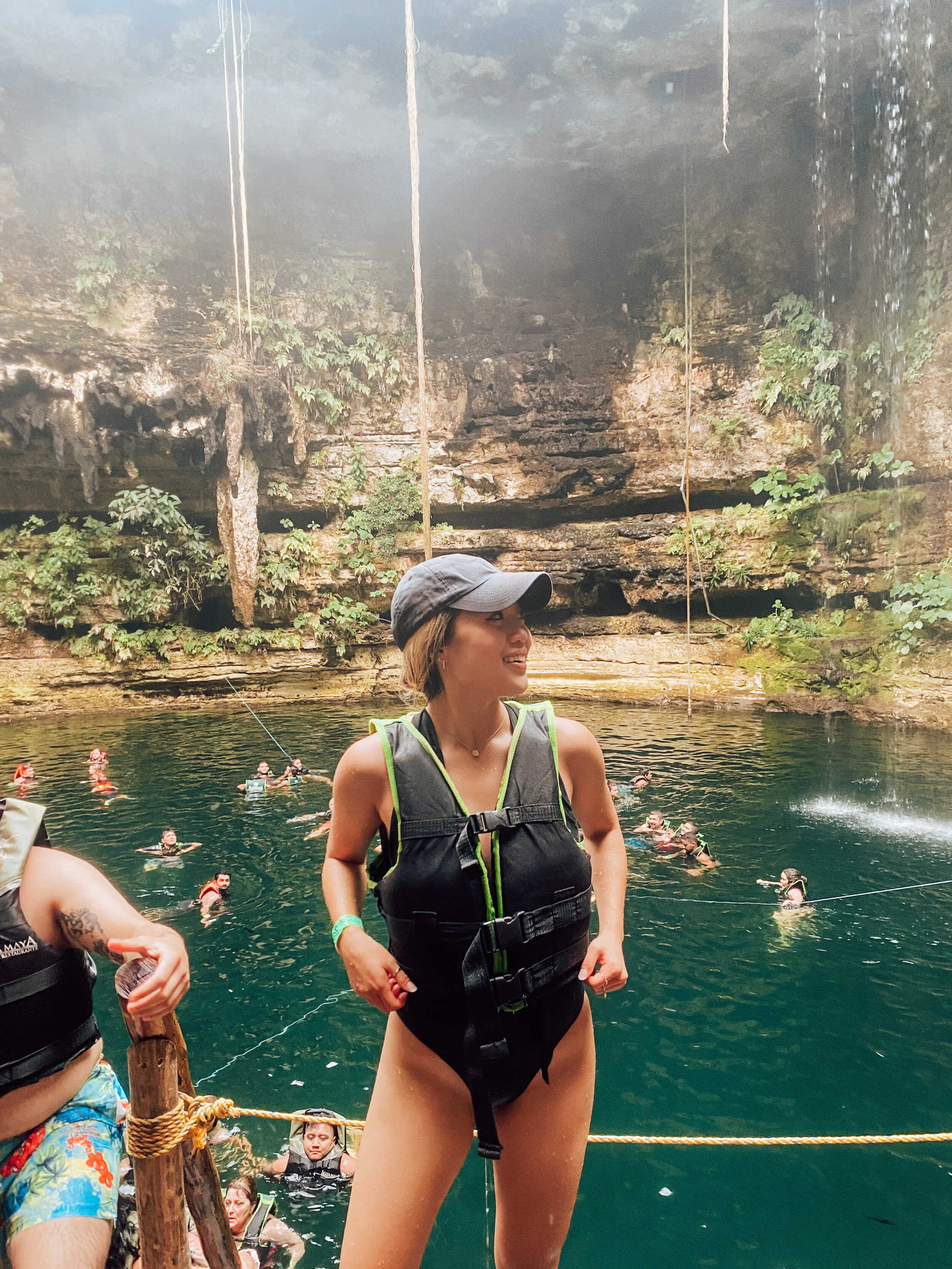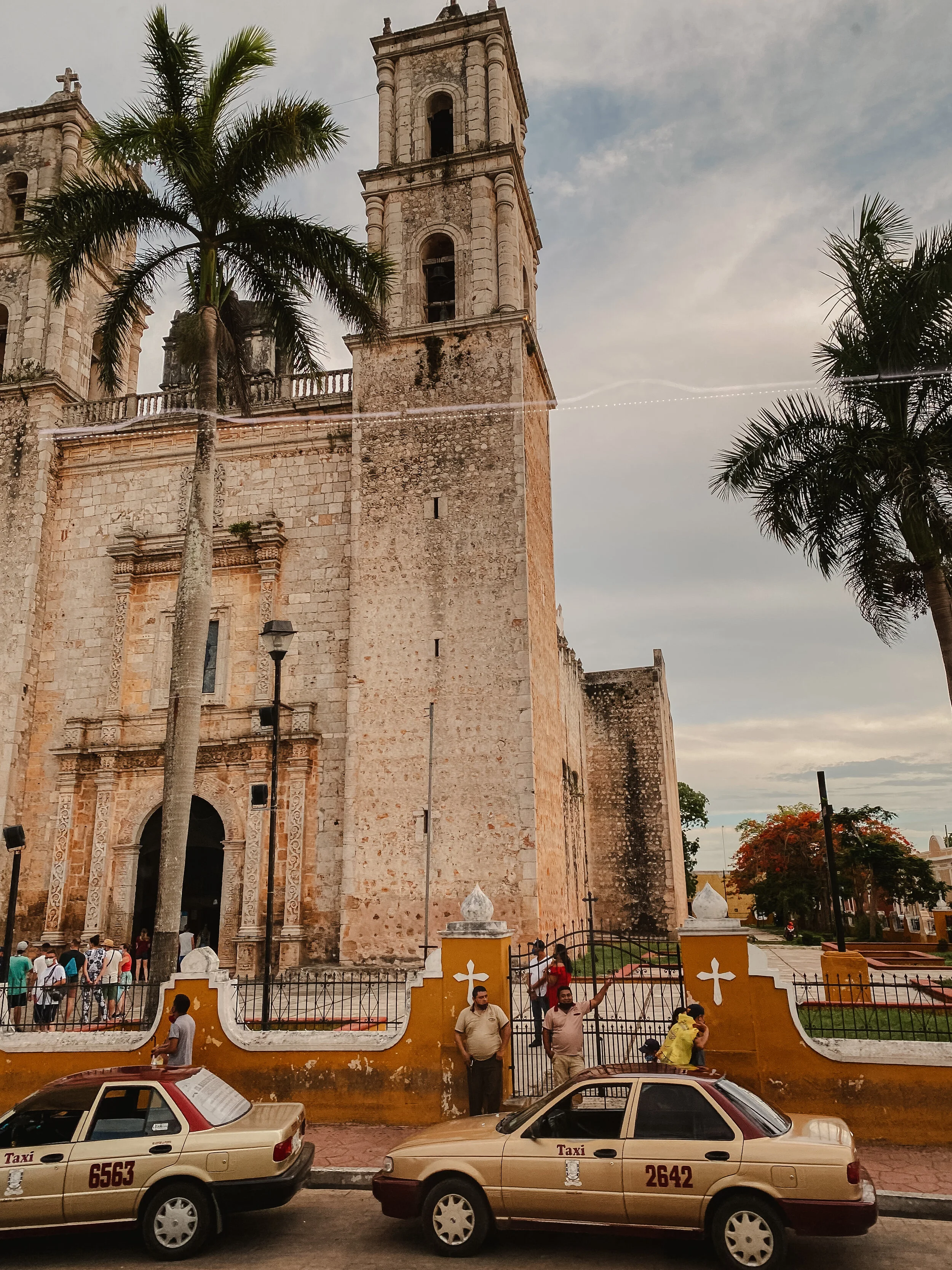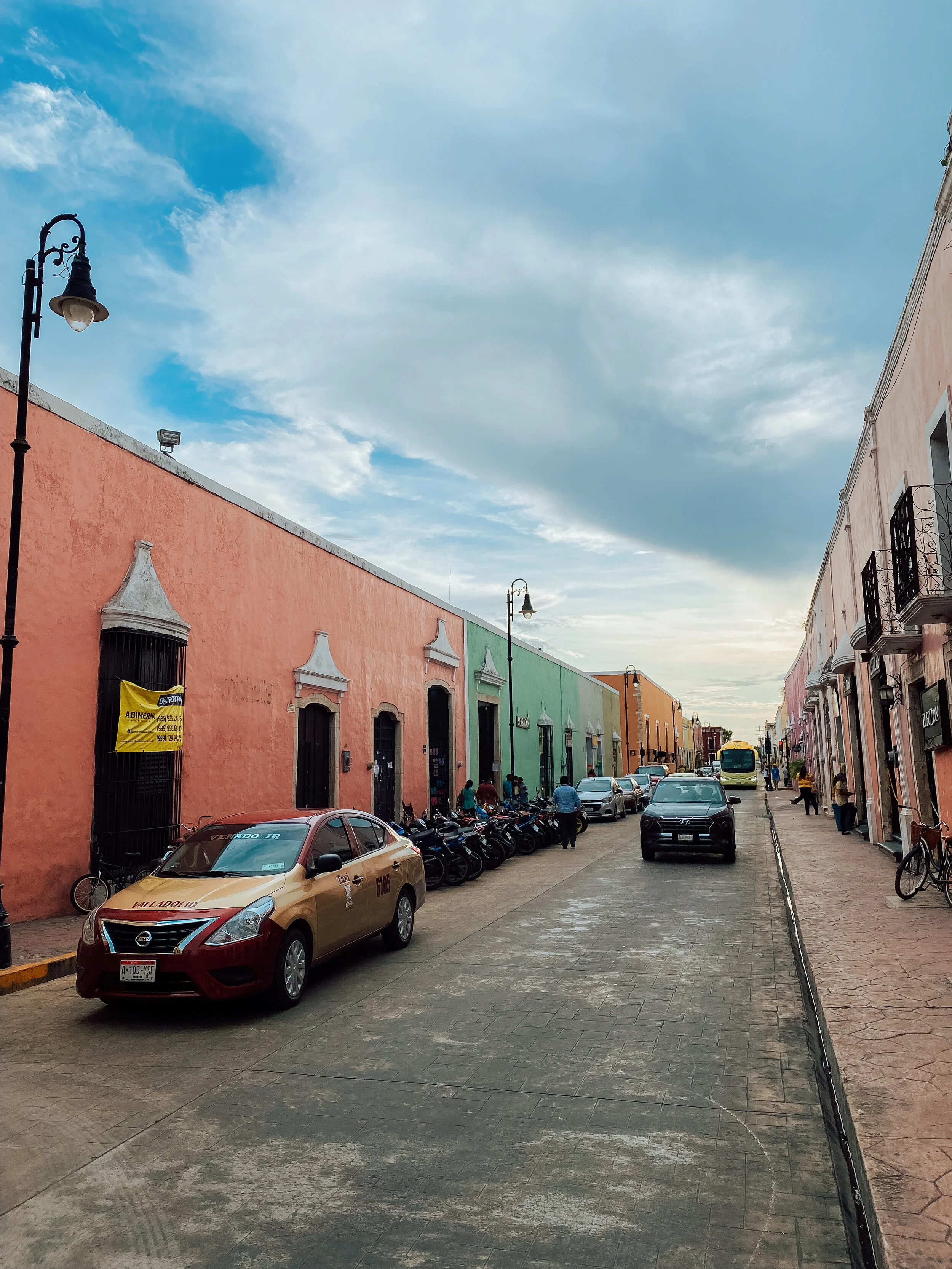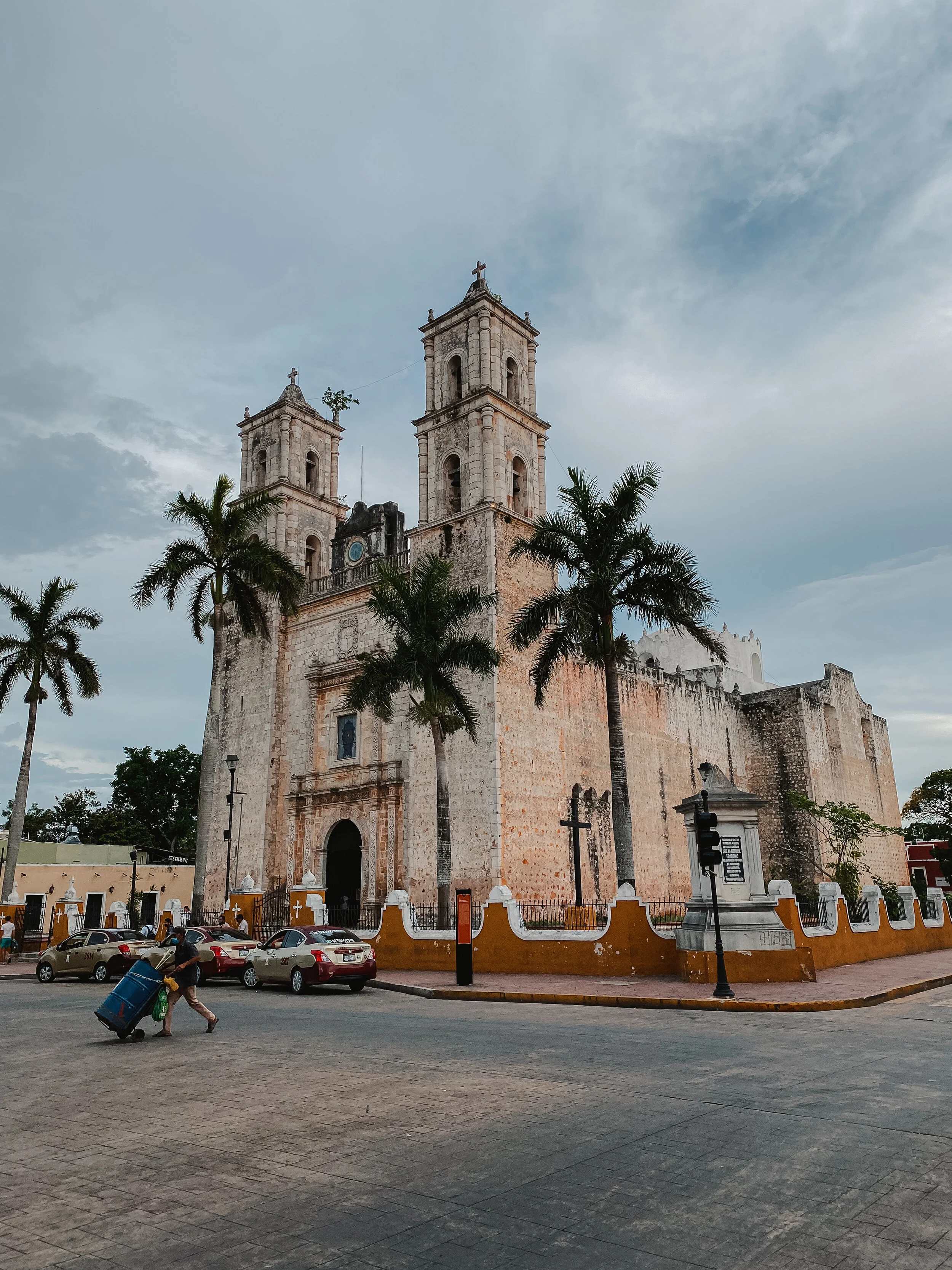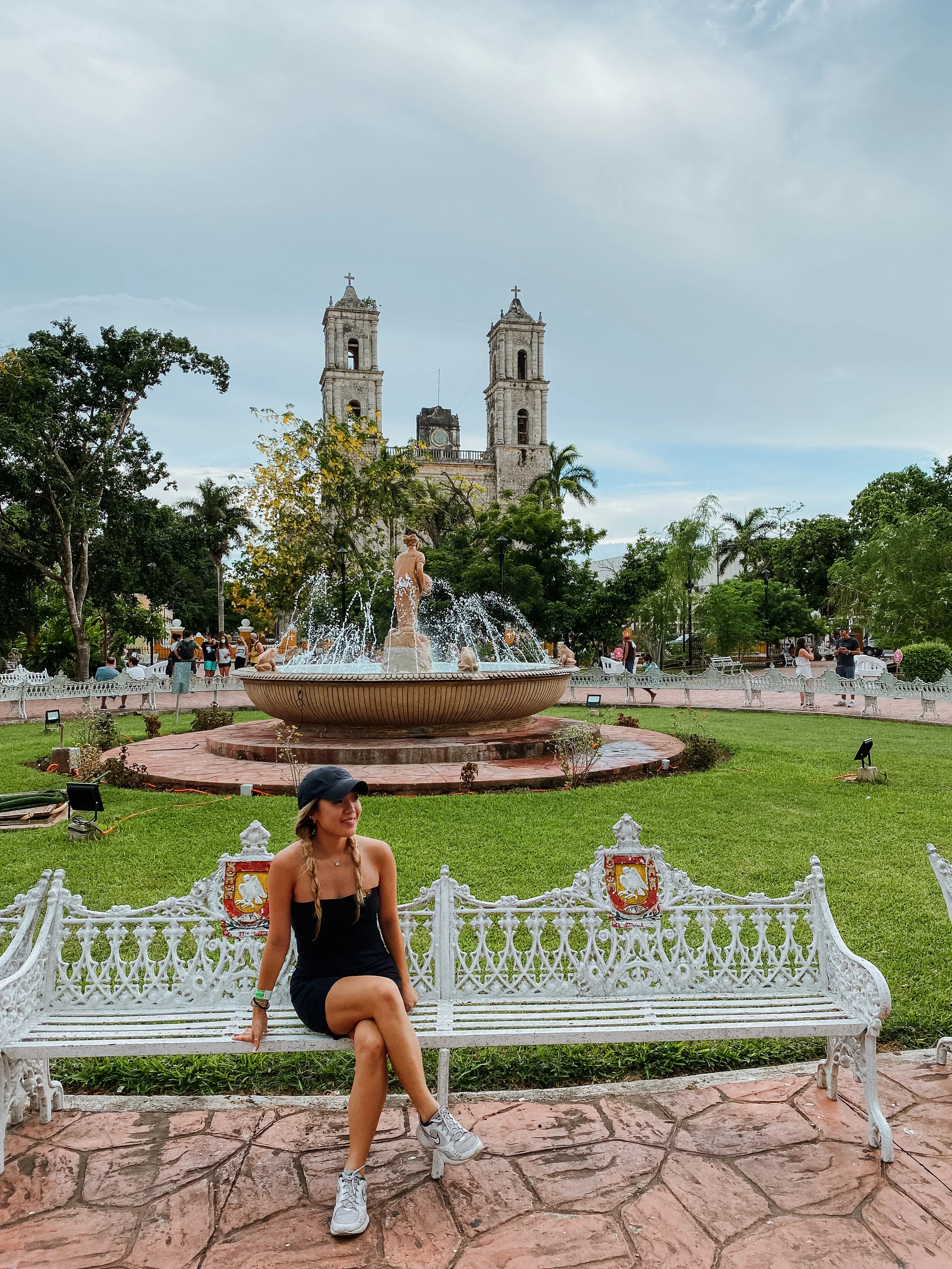The Ultimate Guide to Visiting Chichén Itzá and Valladolid
During our stay in Cancun, my sister and I went on an all-inclusive tour to Chichen Itza, a Cenote Maya, and Valladolid. And I can’t recommend it enough if you’re planning a trip to Mexico.
Chichen Itza is a complex of Mayan ruins located on Mexico’s Yucatan Peninsula. In this blog post, I’ll share more facts about Chichen Itza, the tour we went on, and things you should know before visiting.
This tour included transportation to and from the hotel, which was pretty nice. After booking the tour, they will confirm the pick-up time based on your hotel name. In our case, our pick-up time was 8 AM and the bus stop was right by the entrance of our hotel. This wasn’t the exact tour we booked, but this one does offer the same spots we went to.
HERE ARE A FEW THINGS TO KNOW WHEN BOOKING:
This all-inclusive tour includes learning about and getting acquainted with the Mayan culture
You’ll be able to live a unique experience visiting one of the wonders of the world — Chichen Itza
On the tour, buffet lunch is offered
Free transportation to and from your hotel is provided
You’ll have the opportunity to swim in the Mayan cenote and visit the town of Valladolid
You can cancel at least 24 hours in advance of the start date for a full refund
The duration is about 11 hours total (including transportation)
DSLR cameras and photography are allowed!
Drones and tripods at the Chichen Itza site are NOT allowed, so do not even attempt to try
SHOULD I TAKE A TOUR VS. VISITING SOLO?
When my sister and I travel, we are hardcore planners. We have a Google Doc for our itinerary and we like to get the most out of our time when traveling. However, we found this group tour to be a better idea versus renting a car because 1) we’ve never been to Mexico so we didn’t know what to expect and 2) it’s nice to have a tour guide explain the history and walk us through the Mexican culture that is tailored towards tourists. AKA everything we should know about visiting the destination and more. So here are my honest thoughts about booking group tours — it’s hassle free, already planned out, and buffet lunch is typically included on most tours. The downside is that you won’t have freedom to control how long you can stay at each place and moving with tourists can always drag on the travel time.
HERE ARE TIPS ON WHAT TO BRING WITH YOU:
Something I learned about visiting Mexico is this — they are REALLY good at convincing you that you need to buy something from them. We joked that if anyone wants to go into sales, they should move to Mexico and learn their tactics because they are really good at making you think that yes, you in fact do need an umbrella and a fan with water mist while visiting the Mayan ruins. Which brings me to this — here are things to bring with you to avoid spending too much $$ while on the tour:
1) bug spray —bring your own to avoid spending extra $$ on the trip. Our tour guide had us convinced we NEEDED bug spray. And to be honest, we’ve heard that the mosquitos in Mexico are savage. So we slapped $10 in his hand for a small travel-size bottle of bug spray. YEP. Overpriced, for sure. But better safe than sorry!
2) reef safe sunscreen — the sun rays are stronger in a tropical place like Mexico, so you NEED sunscreen. I’d recommend using reef safe sunscreen because regular sunscreen products contain harmful chemicals that can damage coral reefs. This is a really good and informative article on how sunscreen impacts the ocean and what makes a sunscreen reef-safe. There’s a lot of reef safe sunscreen brands to choose from — here are a few — LOVE this brand (here) and I typically stick to spray-on sunscreen. Since I checked in a bag, I was able to bring a larger spray can of sunscreen, but if you’re not checking in a bag, I’d advise the travel-size. This is also a favored brand of mine that I’ve been using recently (here). I also own this sunscreen and it feels just like regular lotion. This is the mist version — travel size version here.
P.S. sunscreen sticks = game changer.
HIGHLY recommend using a reef safe sunscreen, especially if you’re swimming in the beautiful cenotes.
SHOP REEF SAFE SUNSCREEN HERE:
3) water and snacks — my sister and I made the mistake of not packing any bars or snacks on our trip to Mexico, hence why we were basically starved the first two days there. We woke up early, got on the bus, and didn’t have any food until 2 PM, which is when we finally ate at the buffet. Piece of advice: PACK. SNACKS.
4) bring a hat — the heat is NO JOKE at Chichen Itza. Temperatures can go up to 95 degrees and since there is no shade in this area, I highly recommend packing a hat and bringing sunglasses. I brought this one with me — my favorite thing about this straw boater hat is that it’s adjustable to your head. Since I have a smaller head, I liked that I was able to tighten it in case the wind was stronger. It did not fall off my head ONCE, even with the breeze. It’s also under $20!
5) bring a swimsuit and a towel — in case you do want to go swimming in the cenote. There are dressing rooms and bathrooms at the location, so you can change into your swimsuit, if you don’t want to wear it the entirety of the trip. Be sure to bring a towel to wipe off afterwards!
6) waterproof cases / pouches — my sister bought us these off Amazon and they did the trick when we were swimming in the cenote. I would NOT have taken my phone anywhere near the cenote if I didn’t have the waterproof pouch with me.
#hatgamestrong
Before heading to Chichen Itza, we had a pit stop close by for the buffet lunch and walked through their gift shop.
WHAT IS CHICHEN ITZA AND WHERE IS IT LOCATED?
Chichen Itza is an ancient Mayan city in the Yucatan peninsula of Mexico and one of the most visited tourist spots in Mexico. It’s located about 120 miles from Cancun. Chichen Itza is classified as one of the New Seven Wonders of the World. El Castillo (the Temple of Kukulkan) is the symbol of Chichen Itza and is the name of the famous pyramid located in the middle of the site.
6 INTERESTING FACTS ABOUT CHICHEN ITZA:
. It’s one of the New 7 Wonders of the World
The term Chichen Itza means ‘the mouth at the well of Itza’. It is believed Itza means ‘water magicians’, deriving from the Mayan Itz for ‘magic’ and á for ‘water’.
The city of Chichen Itza was built by the Mayans
El Castillo has 365 steps in total — 91 on each side and one at the top. This equals the number of days in a year. Each side represented one season and was used to figure out the best times for sowing seeds and harvesting crops. The huge pyramid, in fact, functioned as one big calendar
Until 2006, tourists were allowed to climb El Castillo — now the pyramid is banned from climbing after a women tumbled to death while descending the steps
If you clap your hands at the base of El Castillo’s stairs, you can hear a unique echo ringing from the pyramid. The echo resembles the warble of the Mexican quetzal, a bird that was considered sacred in the Mayan culture
After Chichen Itza, we headed to the Maya Cenote. We only had less than an hour to stay at the cenote, so as soon as they started the countdown, we were off! Swimming in the cenote is optional and you can choose to walk around the area, get food, etc., See below for what the area looked like:
These cenote photos were taken with the waterproof pouch, hence the lack of quality of the shots.
WHAT IS A CENOTE?
A cenote is an underground chamber or cave which contains permanent water — aka a natural sinkhole where the ceiling of the cave has collapsed.
HOW DO YOU PRONOUNCE ‘CENOTE?’
Cenote is pronounced as ‘seh-no-tay.’
WHY ARE THERE SO MANY CENOTES IN THE YUCATAN PENINSULA?
The Yucatan peninsula is basically a flat piece of limestone, which used to be a gigantic reef millions of years ago until the sea level dropped and revealed what we now know as the Yucatan Peninsula. The land mass is scattered with caves and sinkholes (cenotes), this vast network of fractures drains the rainwater from the surface into many vast underground river systems. It’s very difficult to know the exact number of how many cenotes are out there in the Mexican jungle but there are over 7,000 cenotes, over 2,200 have been registered. And at least 900 of these are considered to be a part of the ‘Ring of Cenotes’ located near the city of Merida. (source)
5 THINGS YOU SHOULD KNOW BEFORE SWIMMING IN THE MAYA CENOTE:
Life jackets are required for this specific cenote.
You may bring your phone, as long as it’s in a waterproof case or pouch — I brought this one.
Be careful coming down the steps to the cenote — the girl in front of me slipped and I unfortunately saw her tumble down a few steps with bruises and cuts from her painful fall…
The water was a little cold when I got in.
My sister actually jumped in — there’s an option to jump or climb down the ladder into the cenote.
WHAT IS THE SIGNIFICANCE OF A CENOTE?
A cenote was quite significant to the Mayan people. Cenotes were their main water source and also considered the entrance to the Xibalba, which was known as the underworld. Cenotes were so important that a lot of the temples and villages were built close by. Chichen Itza is one of them.
WHAT WAS VALLADOLID LIKE?
If you’re looking for authentic Mexican culture (outside of Cancun and Tulum), Valladolid is definitely worth visiting. Think the idea of a typical Mexican town: pastel-colored colonial houses, old VW Beetles, colorful flag chains, and a small Cathedral that sits in the center of it all. It was our last stop on the group tour so we literally had 20 minutes to spend here, but I’d definitely come back for a longer visit.
WHAT IS THE HISTORY OF VALLADOLID AND WHERE IS IT LOCATED?
Valladolid, Mexico is a hidden gem located in The Yucatan Peninsula that is known for its quiet streets and pastel walls. Its culture dates back to the 16th century. Visiting the Mercado Municipal will give you your dose of real local culture. It’s a local market located northeast of the city center.
FUN FACTS ABOUT VALLADOLID:
1) It is the third largest city in Yucatán
2) The Iglesia de San Servicio (AKA Valladolid’s main cathedral) is located south of the main square
3) The Spaniards built the Iglesia de San Servicio cathedral over a demolished Mayan pyramid
4) There are no car rental companies in Valladolid
Was this travel guide helpful?
Let me know if any of these spots are on your Mexico bucket list. If you have any questions, feel free to comment below or send me a DM on Instagram :)


